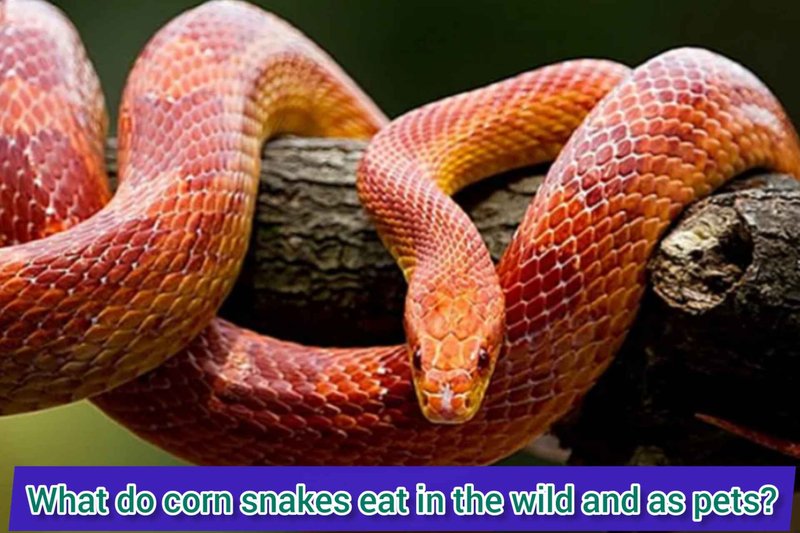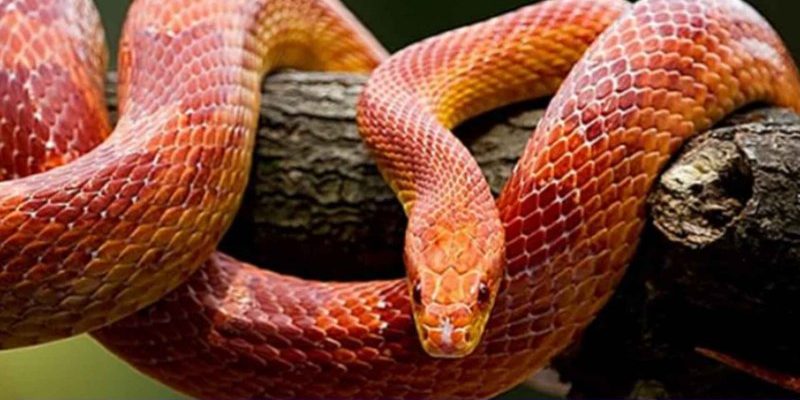
Corn snakes are non-venomous constrictors, which means their preferred meals often include small mammals and birds. Imagine the thrill of watching a snake silently approach its prey, perfectly camouflaged in its natural environment. Understanding what corn snakes eat and how they hunt not only satisfies your curiosity but also helps you appreciate the incredible adaptations these snakes have developed over time.
What Do Corn Snakes Eat?
Corn snakes have a varied diet, primarily consisting of small rodents like mice and rats. When they’re in the wild, they can also munch on birds, lizards, and even small rabbits. Here’s a closer look at their diet:
- Mice: These are a staple in their diet, as corn snakes can easily hunt them due to their size.
- Rats: Larger corn snakes may hunt rats, especially when available.
- Birds: Occasionally, corn snakes will go after nesting birds or juvenile birds that are small enough to catch.
- Lizards: In regions where they are found, lizards can also be a tasty snack for these snakes.
Corn snakes are opportunistic feeders, meaning they’ll take what they can get. This flexibility is essential for survival, especially in areas where food sources can vary. You might be wondering if corn snakes will eat anything other than these options—well, they can occasionally consume eggs, too! When food is scarce, they adapt and make the most of their environment.
How Do Corn Snakes Hunt?
Corn snakes are expert hunters, and their method of hunting is quite interesting. They rely heavily on their camouflage to blend in with their surroundings. Imagine wearing a shirt that allows you to become invisible—this is how corn snakes take advantage of their patterns and colors. They can lie silently among the leaves and grass, waiting for their next meal to wander too close.
When a corn snake spots potential prey, it doesn’t rush in like you might expect. Instead, it often takes a slow and calculated approach, inching forward to avoid detection. This stealthy method is crucial for capturing fast-moving creatures like mice or lizards. Here’s a quick breakdown of their hunting strategy:
- Camouflage: Their skin patterns make it easier to hide in the environment.
- Patience: They’ll wait for the right moment to strike rather than chase.
- Sensing: Corn snakes use their excellent sense of smell to detect prey from a distance.
It’s truly impressive how a corn snake can remain motionless for long periods, showcasing patience that many of us would envy. This waiting game often pays off, as they can spring into action at the perfect moment, catching their prey off-guard.
The Striking Technique
Once a corn snake decides to strike, it relies on its quick reflexes and powerful body to secure its meal. Here’s how the striking process typically unfolds:
1. Target Acquisition: When the snake is ready, it focuses on its prey, usually from a few feet away.
2. Strike: The corn snake will launch itself forward, using its muscular body to grab the prey with its mouth.
3. Constriction: After capturing its meal, the corn snake coils around it and applies pressure to subdue the prey quickly.
This technique is quite effective, especially for small mammals. If you think about it, it’s like a wrestler holding their opponent in a firm grip until they can’t move. Unlike some snakes that use venom, corn snakes have evolved to rely on their strength and skill to capture and consume prey.
How Often Do Corn Snakes Eat?
The frequency of feeding can depend on various factors, including age, size, and activity level. Generally, juvenile corn snakes, which are growing rapidly, need to eat more often than adults. Here’s a rough guideline:
- Juveniles: They typically eat every 5–7 days.
- Adults: Most will eat once every 7–14 days.
- Pregnant Females: They may require more food, especially during the gestation period.
You might be surprised at how long these snakes can go without eating. In the wild, they may only catch prey when the opportunity arises, leading to irregular feeding intervals. This flexibility in their eating habits helps them survive in fluctuating environments.
Feeding Corn Snakes in Captivity
If you’re considering keeping a corn snake as a pet, understanding their diet is crucial for their health and well-being. In captivity, you’ll likely feed them pre-killed or frozen-thawed rodents. Here are some tips for feeding your corn snake:
- Size Matters: Choose rodents that are appropriately sized—ideally about the same width as the snake’s body.
- Feeding Frequency: Follow the guidelines based on their age and size. Young snakes eat more often than adults.
- Environment: Make sure to feed them in a secure, quiet place to reduce stress and encourage natural hunting behavior.
Many snake owners find that their pets will thrive on a diet of frozen-thawed rodents, and it’s often more convenient than live feeding. Just like any animal, keeping an eye on your corn snake’s health and feeding habits is vital.
Common Concerns about Feeding Corn Snakes
As with any pet, you may have questions or concerns about feeding your corn snake. Here are some common issues that can arise:
- Refusing Food: It’s not unusual for snakes to go off their food, especially during brumation (a sort of snake hibernation). If this happens, don’t panic! They often resume eating when they feel ready.
- Digestive Issues: Feeding them too large a meal can lead to digestive problems. Always stick to the recommended sizes for their age and breed.
- Feeding Live Prey: While some owners prefer to feed live animals, it’s often safer and less stressful for the snake to eat pre-killed food. It reduces the risk of injury to your pet.
If you notice your corn snake is consistently refusing food or showing signs of distress, consulting a veterinarian with experience in reptiles can help ensure everything is on track.
Corn snakes are fascinating creatures with unique eating habits and hunting strategies. Their ability to adapt their diets and hunting techniques helps them thrive in both wild and captive environments. Whether they’re striking from the grass or patiently waiting for the right moment, these snakes remind us of the intricate balance in nature.
So, the next time you see a corn snake—or think about adopting one—remember what makes them special: their hunting prowess, varied diet, and remarkable adaptability. Understanding these aspects not only enhances your appreciation for these remarkable snakes but also helps ensure their healthy and happy lives as pets.

